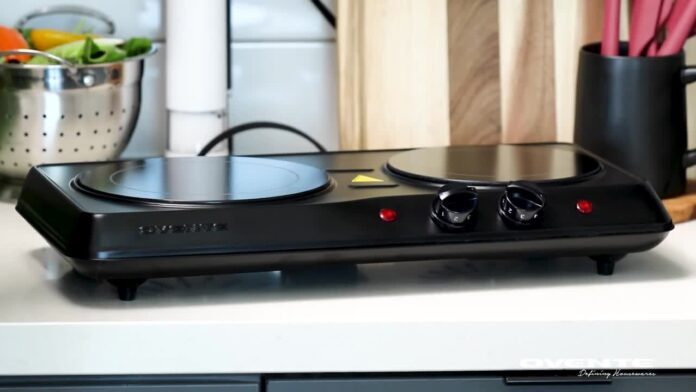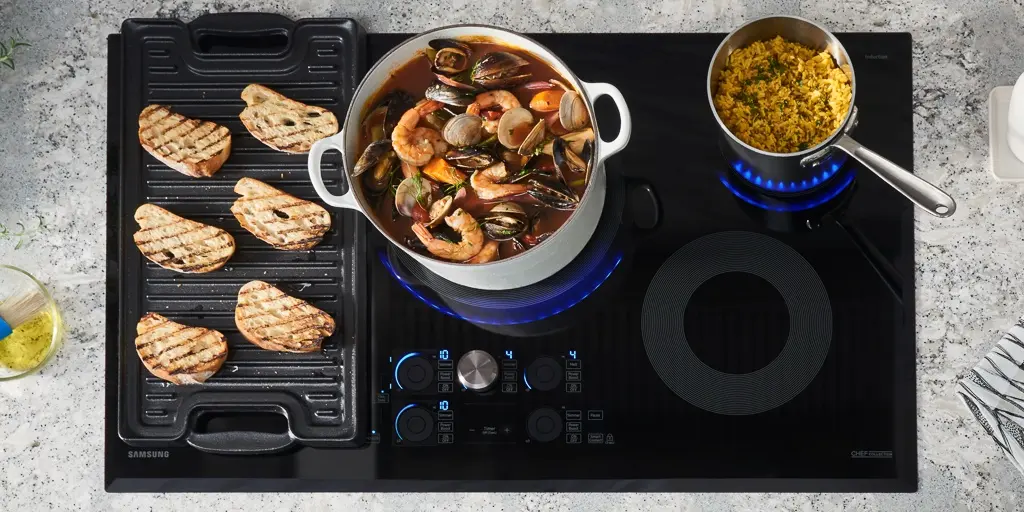While searching for a new electric cooker, you will come across plenty of infrared and induction options. According to bestbargains.lk in Sri Lanka, they are two of the most popular options that you can find today. However, choosing between them is not an easy task.
To help you make that buying decision, we will compare infrared vs induction cookers on various parameters to help you choose the best one.
1. Energy Consumption:
There are a lot of misconceptions revolving around the electricity consumption by infrared and induction cook tops. However, as per study published in 2020, induction technology consumes 14% lower power than infrared ones.
Want to know how?
Induction cookers conduct heat with greater efficiency. The efficiency can be upwards of 90%. That is why, even though they consume more electricity, the higher efficiency certainly reduces the cooking time and the overall electricity consumption.
Also, infrared cookers can take 60% more time than induction to reach their peak temperature. It means that they will use electricity for a longer time. Of course, if the appliance uses electricity for a longer time, the overall amount of electricity used will also be higher.
Considering both these factors, induction method is certainly more energy efficient.
2. Compatible Cookware:
When choosing between infrared and induction cookware, it is essential to look at its compatibility. It will be an additional expense if any of them requires you to buy entirely new cookware. That is why, before choosing them, they must know about their compatibility.Infrared cookers are compatible with most cookware available in your kitchen. That is why you don’t need to buy new utensils. This is because the cooker makes the electricity pass through the coil, which produces resistance and, in turn, heat.
This heat is then radiated towards the cooking surface. Most of the cooking utensils in our kitchen are good conductors of heat. That is why; using such utensils will ensure that your food gets cooked from the heat produced by the infrared element.
The working of an induction cooker is entirely different. It passes the electric currents to produce magnetic fields, which can, in turn, heat specially designed utensils.
The advantage of heating through magnetic induction is that the heat transfer is almost instantaneous. However, that only happens for certain specific utensils.
If you have utensils made from other materials like ceramic, they won’t capture the heat from the magnetic field generated. Therefore you cannot use that utensil.
That is why, when going with an induction cooker, you will have to buy utensils made from iron or stainless steel that are compatible with the induction base.
3. Side Effects:
There are a lot of misconceptions about the side effects of Infrared and induction technology. We will go into both details to help you understand which is a safer bet.
One of the side effects of an Infrared cooker is that since it uses thermal conduction of heat, it might lead to the degradation of vitamin B12.
This is especially true for meat and dairy products. That is why; the amount of B12 you might receive from the infrared cooker is on the lower side. However, it just reduces the amount of B12 and does not eliminate it.
When cooking ingredients like fruits and vegetables for the first time, the Infrared cook top reduces the B12 content. However, if you are heating the same using the Infrared cook top, the nutrient loss is significant. This is another side effect you need to keep in mind.
When it comes to induction method, the side effect is entirely different. The induction technology uses the magnetic field to transfer the heat. If you’re using it usually, the magnetic field will have no side effects because of the limited exposure.
However, if you’re working in a commercial kitchen and consistently using the induction appliance, the magnetic field may result in side effects after years of use. However, under normal circumstances, you won’t have to worry about the side effects of the magnetic field in an induction cooker.
Thus, if you’re looking to buy an induction cooker for day-to-day use and not for commercial use, it is a better option than the Infrared counterpart.
4. Newness in Technology:
Many people believe that Infrared technology is more advanced because they have become popular recently. On the other hand, induction cookers have been around for a few years.
However, the truth is different.
Infrared technology has been used in microwaves for more than fifteen years. That is why even the Infrared cookers might be new, but the technology behind them is pretty old.
By those standards, induction cookers use more recent technology.
There is no consensus on which one is more recent, but induction technology was tried and tested after the Infrared one.
If you compare them based on which one is better, Infrared certainly has an edge. The reason is that Infrared technology doesn’t use any magnetic field. It uses thermal conduction of heat, which is very similar to the gas or propane cook tops we currently use.
Thus, induction technology is more recent than the Infrared ones, which were used in microwaves more than 15 years ago.
Conclusion
The comparison between Infrared vs. induction cookers is not an easy one. Also, there is no clear winner. The option you choose would be dependent on your use case.
You can go with an Infrared Cook Top if:
- You do not want to buy new utensils.
- You do not mind the extra electricity consumption.
- You want to cook more frequently within a day.
The induction cook top is a better option if:
- You need to cook delicacies at a very fast pace.
- You want high efficiency and less electricity consumption.
Thus, the cooker you choose between both of these will be dependent on your own preferences. Once you go through our comparison and the verdict above, it is easy to choose between induction and infrared cooker.



















